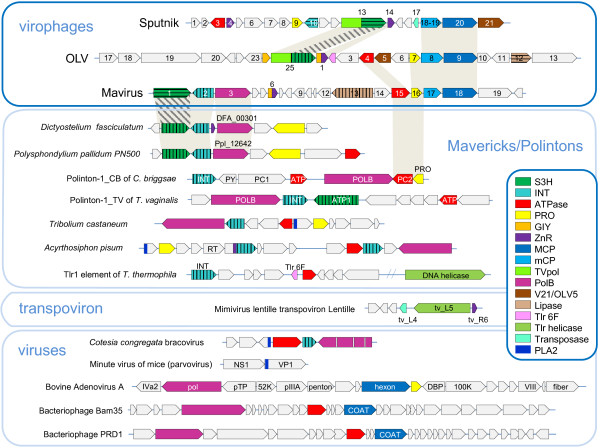Figure 1.
Comparison of genome architectures of the virophages, polintons, some viruses, and transpovirons. Homologous genes are marked by same colors. Different hatching patterns are used to mark non-orthologous primase-helicase, integrase, and lipase. Homologous regions are shaded. Reference sequences were extracted from GenBank (D. fasciculatum, GI:328871053; P. palladium, GI: 281202948; T. castaneum, GI:58197573; A. pisum, GI:156713484; Mimivirus lentille transpoviron Lentille, GI: 374110342; C. congregate bracovirus, GI: 326937614 Minute virus of mice, GI:9626993; Bovine adenovirus A, GI:52801677; Bacteriophage Bam35, GI:38640293; and Bacteriophage PRD1, GI:159192286) and Repbase (Polinton-1_CB and Polinton-1_TV [15,20]). The genome organization of Tlr1was adopted from ref. [18]. T. castaneum and A. pisum genome fragments are shown as in [21]. PLA2 stands for the phospholipase A2 domain of parvovirus capsid protein. Other color key abbreviations are the same as throughout the text.

